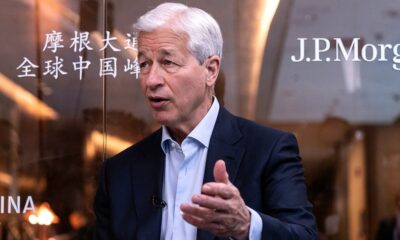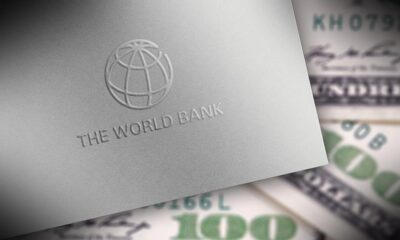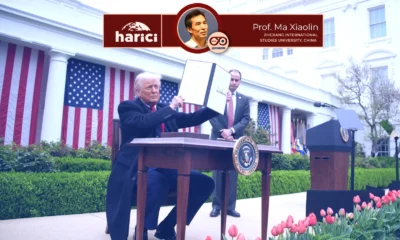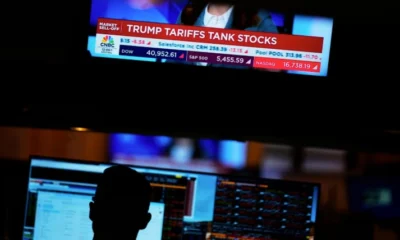Europe
Death of a myth: Wage hike does not lead to inflation

When Germany’s largest labour union, IG Metall, agreed to a 5.2 per cent wage rise last November, monetary policymakers breathed a great sigh of relief. As reported in Financial Times, this deal finally eased central banks’ inconvenient wage-price spiral fears.
The fear that wage increases will lead to price increases (and hence inflation) is quite widespread. We see that not only the Germans but also the British live with the same concern. Bank of England President Andrew Bailey says the wage bargain needs to be “restrained” or things will get out of hand. Jason Furman, who was the Director of the National Economic Council under Barack Obama, is also clear: Increasing wages also increases prices. According to Furman, this is “basic micro and common sense.”
European Central Bank President Christine Lagarde said they would look at the increase in wages to see if they would continue to raise interest rates in Europe. Last May, Lagarde rejected bank employees’ desire to link wage increases to consumer price increases and wrote that this was “not acceptable and desirable”.
Klaas Knot, president of the Bank of the Netherlands, who has been skeptical about wage increases at the level of inflation, said they should be on high alert for any “feedback loop” to wage and price increases, but added that current wage developments do not provide clear evidence that they are entering a wage-price spiral in the eurozone.
Federal Reserve Chair Jerome Powell has made the most explicit statement. In explaining why they’re raising interest rates; Powell makes it clear that they want to reduce demand and lower wages. Powell thinks they can do all this without slowing the economy and putting it in recession. However, clearly, interest rate hike aims to reduce the bargaining power of the working class and suppress wages by increasing unemployment.
What is the wage-price spiral?
The technical wage-price spiral recipe: at least three out of four consecutive quarters have a wage-price spiral if both consumer prices and nominal wages increase. To give a more concise definition, price increase triggers the wage increase, and wage increase causes the capital owner to increase the prices, and so on.
The debt between Thomas Weston, a leader of the carpenter’s union, and Karl Marx at the International Working Men’s Association in 1865 is the historical example of this issue. Just like the central banks argue today, Weston said that capitalists reflected the increase in wages to increase in prices to protect their profits; increasing prices would reduce the purchasing power of workers and thus keep real wages in place. That is, Watson concluded that a struggle or bargain for wage increases was useless.
Marx’s answer to this is summarized in the manuscript we know as Value, Price, Profit. Marx presents three arguments against Weston: First, wage increases come to the fore not out of the blue, but usually as a reaction to rising prices. Second, wages don’t cause inflation, but multiple factors influence it: The size of production, the productive forces of labor, the value of money, fluctuations in market prices, and the different phases of industrial cycles. So, for example, under the condition that wages remain the same, a change in the amount of money in the market (or the value of money) can trigger inflation. Or, again, a change in labor efficiency (i.e., productivity) has a direct impact on commodity prices, provided wages remain the same.
Moreover, according to Marx, it is true that a general rise in wage levels reduces overall profit rates, but this does not directly affect the prices of commodities. Capitalists and their ideologists object to the increase in wages, not because prices will increase, but because profits will decrease. The physical limit here is to provide the means of livelihood required for the employee working today to work tomorrow. However, Marx says that in some examples, the wage received by the workers can be pushed below the minimum subsistence. Such a reduce in labor costs is compensated by charity on national scope or laws on supporting the poor. Hence, the question of how to detect wages and profits is answered dynamically, not statically, and the answer is determined by the opposing classes’ struggles and balances of power.
It will happen again: The claim that workers’ “excessive” demands for wages will lead to inflation is an assumption raised by the capitalist and his ideologists, who know that their profits will decrease. Now, it is time talk about the cracks on this front.
IMF’s confession
IMF economists are finding it very difficult to find the evidence they have been looking for from history for a wage-price spiral. A recently published article examines wage-price spirals in the last 60 years of advanced economies.
The conclusion reached by IMF economists is that wage-price spirals are difficult to find in recent historical records, at least when they are defined as a continuous increase in prices and wages. Moreover, the IMF has even more difficulty in finding the wage-price spiral in other historical periods when real wages has fallen like today. What happens is the nominal wage increases that only partially replace the real wage loss.
The examples found by the economists showing fall in real wages and tight labour market as experienced today, often prioritize a period of falling inflation and rising nominal wages. Thus, as economists describe it as a “surprise,” sustained wage and price increases in only a small part of the example are being rolled over to the next period. As a result, the IMF finds that the rise in nominal wages cannot necessarily be taken as a sign that a wage-price spiral period has begun.
The International Labour Organisation (ILO) also confirms this situation. In the first half of 2022, global monthly wages declined by 0.9 per cent in real terms. When wages in developed countries are separated from wages in developing countries, the ILO report shows that real wages in developed G20 countries decreased by 2.2 per cent, while in developing countries they increased by only 0.8 per cent. Looking at the United States and Canada, it is understood that real wages decreased by 3.2 per cent in the first half of this year.
The OECD report complements this statement. The report, which includes third-quarter data, suggests real wages decline in 31 of 32 major countries in the third quarter of 2022 compared to the same period the previous year.
President and CEO of the Federal Reserve Bank of San Francisco, Mary C. Daly also has had to admit that one of the most fundamental elements of the wage-price spiral is that the rising wage phenomenon has not emerged with inflation.
The ILO says that inflation is not caused by wage increases, but by the Ukrainian war and the global energy crisis.
Sources of inflation
Paul Donovan, the chief economist of UBS, one of the world’s largest asset managers, reminds that real wages are falling globally, pointing out that the Fed’s wage-price spiral thesis is not correct.
According to Donovan, the main source of today’s inflation is the excessive increase in profits. If inflation comes from profit rather than labor, says Donovan, central banks should look for other ways alternative to shrinking demand based on increasing unemployment.
A graphic published by the Economy Policy Institute last April provides the picture. Unit labour cost constituted 61.8 per cent of the increase in unit prices in non-financial companies between 1979-2019. Between the fourth quarter of 2021 and the second quarter of 2022, this rate decreased to 7.9 per cent. The main factor driving the increase in unit prices is profit with 53.9 percent. It is composed of non-work input prices with 38.3 percent.
So, what else is among the sources of inflation? The decrease in supply chains and labor productivity during the COVID period and the inadequate supply afterwards is a reason. Zero COVID policies in China and the subsequent Russia-Ukraine war also has caused disruptions in global supply chains and cost increases. Sanctions against Russia have also led to an exorbitant rise in global energy prices.
Moreover, in Britain, for example, service providers that distribute to retail energy companies and are often owned by large hedge funds and private equity companies can make profits of up to 40 per cent. These companies, known as the “Big Six,” have almost completely monopolized energy supplies. 99 per cent of domestic and small business customers depend on the Big Six. When the huge profits of international energy monopolies such as BP, Shell, Exxon, Chevron, Total is added, the picture is completed. The UK energy distribution companies, which have been privatized since the 1980s, work for profit and households suffer for it. The figure says it all: The Big Six distributed a £23 billion dividend to shareholders. That’s almost six times the tax the Six have been paying over the last decade.
On the other hand, excessive profit rates in 2021 are expected to decrease with the rise in interest rates. It is certain that there will be a slowdown in the profits and therefore investments driven by the increases in energy and raw material prices last year. The downward trend in large tech companies that made huge profits during the pandemic period, layoffs, and the difficulty in accessing finance also indicate that recession is likely in advanced economies next year.
Moreover, since the source of inflation is not “excessive demand” but weak supply, central banks have nothing to do with it. In addition to the disruption of supply chains, the Ukrainian war, and anti-Russian sanctions, decrease in profitability, declining labour productivity and investment appetite do not seem to match supply with demand. While recruitment in the United States is still in full swing, the lack of pace in GDP growth suggests that the problem of labour productivity in developed countries remains. The emergence of a sustained and downward demand shock in the world system therefore seems preordained.
Europe
France bans Israeli arms manufacturers from Paris Air Show
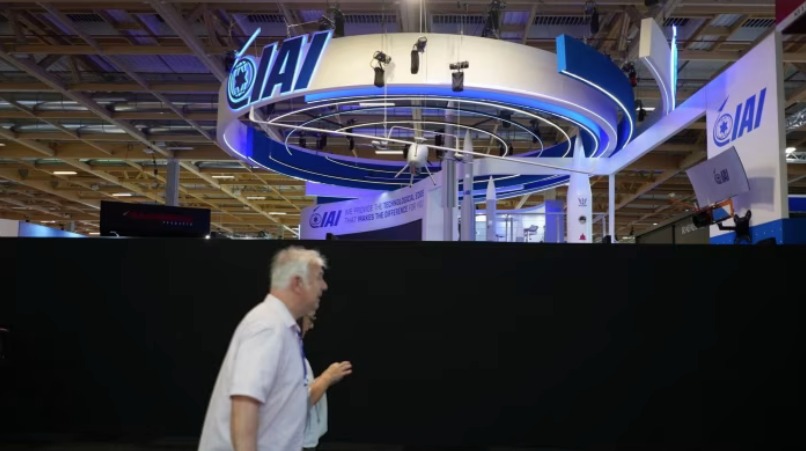
France has banned four Israeli arms manufacturers from the Paris Air Show, escalating diplomatic tensions over the Gaza conflict and leading to accusations of discrimination.
This decision marks the latest sign of escalating tensions between the two countries over Israel’s occupation and blockade of Gaza.
The booths of Elbit Systems, Rafael, Israel Aerospace Industries (IAI), and Uvision were blocked off with black barriers on Monday after they refused to comply with the French government’s directive not to display offensive weapons.
In a statement, the Israeli Ministry of Defense declared, “This outrageous and unprecedented decision is the product of political and commercial concerns,” accusing France of trying to remove “weapons that are competitors to French industry” from the show.
“This decision was made at a time when Israel is fighting a necessary and just war to eliminate the nuclear and ballistic threat that endangers the Middle East, Europe, and the entire world,” the statement continued.
Diplomatic relations between Israel and France have deteriorated in recent months as French President Emmanuel Macron has intensified his criticism of the ongoing war in Gaza.
Macron is also spearheading an international initiative for the recognition of a Palestinian state, a move that Israel’s right-wing government is determined to block. Israeli Prime Minister Benjamin Netanyahu has condemned this initiative.
On the other hand, Macron has supported Israel’s right to defend itself against Iran’s nuclear threat, endorsing its actions against Iran.
According to French officials, the French government repeatedly communicated the ground rules to Israel over the past few weeks. Four of the nine Israeli companies participating in the Paris Air Show complied with the order not to display offensive weapons, and their booths remained open. The Israeli Ministry of Defense’s booths were also open on Monday.
A French official stated that the Israeli companies, which design and manufacture everything from unmanned aerial vehicles and air defense systems to missiles and aircraft, would be allowed to reopen their exhibits if they made the required changes.
IAI’s CEO, Boaz Levy, said the company tried to negotiate with the organizers but found its booth “closed off by black walls built overnight” on Monday morning.
“This kind of behavior is unacceptable and discriminates against us as Israelis and Jews, as all other participants in this air show were not subjected to these restrictions,” Levy added.
This is not the first time France and Israel have clashed over aviation and defense exhibitions since the Al-Aqsa Flood operation on October 7, 2023. After the French government decided that Israeli companies should not exhibit offensive weapons, dozens of Israeli firms were excluded from the Eurosatory exhibition in June 2024 and the Euronaval exhibition in November 2024.
The air show’s organizers announced that discussions are ongoing with various parties to “find a suitable solution to the situation.”
SIAE, a subsidiary of the French Aerospace Industries Association which organizes the event, stated that it had complied with “the instruction of the relevant French authorities to remove certain equipment exhibited at the Israeli stands” before the event.
SIAE added that the companies in question “still received permission to exhibit at the show.”
Europe
European gas prices rise amid fears of an escalating Middle East conflict
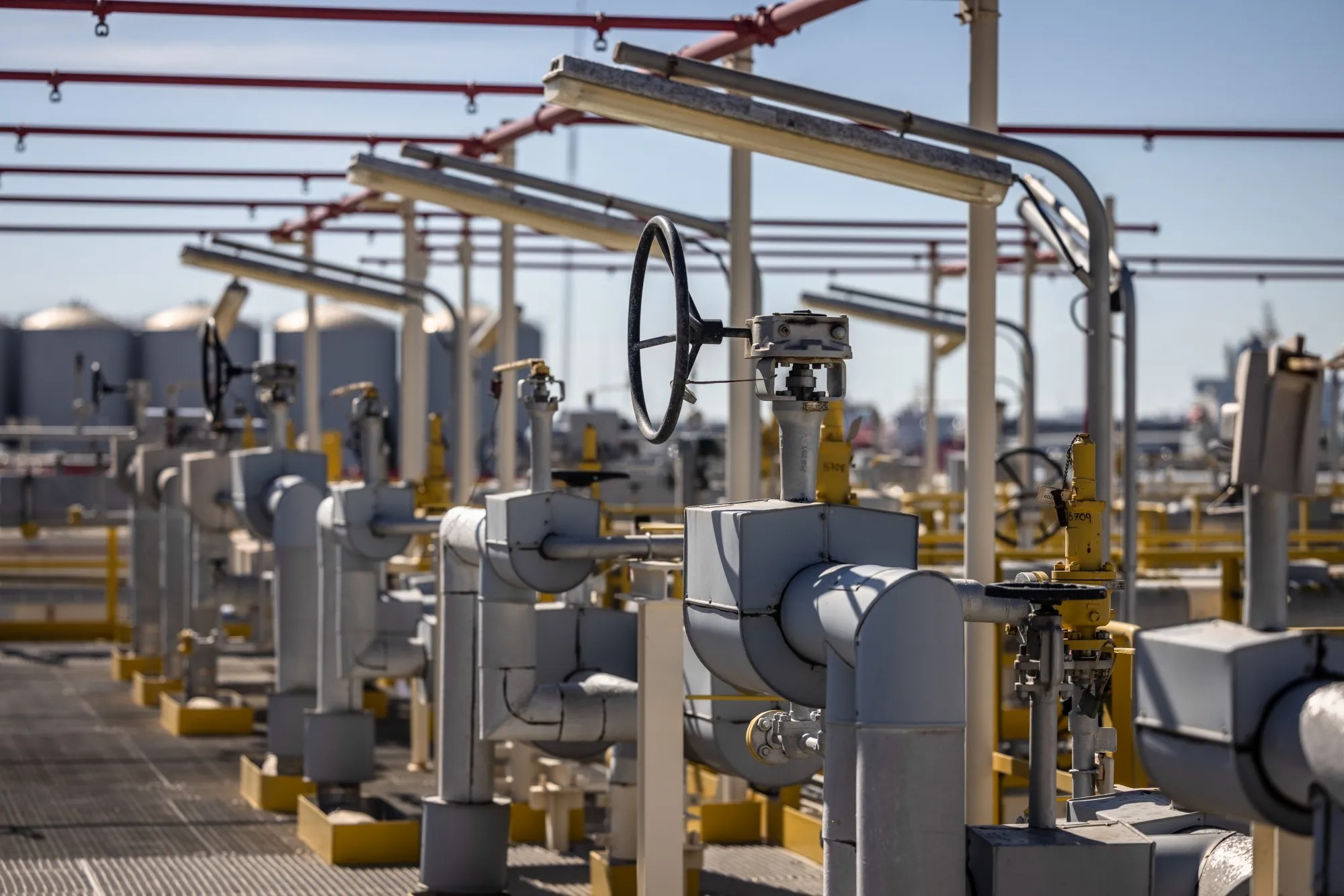
European natural gas prices have risen as traders prepare for the possibility of an escalating Israel-Iran conflict and the associated risks to global energy supply.
According to a report from Bloomberg, benchmark futures, which followed a volatile course in the previous session, increased by as much as 1.8%. US President Donald Trump demanded the evacuation of Tehran and later said that his early departure from the G7 summit in Canada had “nothing to do” with ceasefire efforts between Israel and Iran.
Although Europe appears to be in a good position regarding supply for now, its heavy dependence on the global flow of liquefied natural gas (LNG) makes prices susceptible to sharp movements if geopolitical developments pose a risk to international energy trade. The continent will need more fuel in the coming months to replenish its natural gas storage, which fell to a three-year low this winter.
The most significant threat comes from the possibility that Iran could close the Strait of Hormuz if the war escalates, thereby blocking shipments from Qatar, the largest LNG exporter. As the strait is also a vital route for oil shipments from the region, traders are closely monitoring tanker movements.
According to Goldman Sachs analysts Samantha Dart and Frederik Witzemann, the impact of the conflict on international gas markets has been limited so far. Modest imports by China have made more fuel available for other buyers, such as Egypt, which rushed to find alternative suppliers after Israel cut off its flows.
Additionally, traders are following the European Union’s plans to phase out its dependence on Russian pipeline gas and LNG supplies by the end of 2027. This supply currently accounts for about 13% of the region’s imports. On Tuesday, the European Commission will announce its detailed proposals regarding the ban on these flows.
The Dutch front-month futures, Europe’s benchmark natural gas price, rose by 0.6% to €38.12 per megawatt-hour at 8:52 AM in Amsterdam.
Europe
Germany holds first national veterans’ day since World War II

On Sunday, June 15, Germany held its first celebration for military veterans since the Second World War.
Defense Minister Boris Pistorius joined current and former soldiers and members of the public for events across the country, including a “veterans’ village” constructed in front of the Reichstag building in Berlin.
This marks a historic shift in a country where anything that could be seen as a “display of militarism” has been considered taboo for decades.
The new commemoration, established by a parliamentary resolution passed last year, is designed to “express gratitude, appreciation, and respect” for the Bundeswehr, Germany’s federal army.
The German Bundestag emphasized that the day also aims to deepen the bond between the military and the German people. At the ceremony in Berlin, Bundestag President Julia Klöckner of the CDU described the Bundeswehr as a “parliamentary army,” stating that this places a special responsibility on lawmakers.
She also acknowledged the demanding and often stressful nature of military service, stressing the need to provide soldiers with appropriate support.
Chancellor Friedrich Merz also stated on the social media platform X, “The Bundeswehr is an integral part of our society,” adding that those who serve or have served in the military deserve widespread appreciation, respect, and recognition.
“There won’t be tanks and fighter jets. We’re not there yet. But we are taking a really good first step,” Lieutenant Colonel Michael Krause, head of the newly established national veterans’ office, told the Financial Times (FT), comparing it to major military events in other countries.
Germany is channeling money and resources into its armed forces in response to NATO’s concerns about “Russian aggression.” The new chancellor, Friedrich Merz, has pledged to make Germany’s military the “strongest conventional army in Europe.”
Sarah Brockmeier-Large from the Peace Research Institute Frankfurt said that the fact politicians finally agreed to hold a veterans’ day is “a symbol of a growing appreciation in German society that we need functioning armed forces and that soldiers provide a vital public service.”
Berlin’s role in two world wars created a deep-seated skepticism toward military power after 1945, particularly in West Germany, leading to the emergence of a strong pacifist movement.
For decades, the term “veteran” was mostly associated with those who fought in Adolf Hitler’s Wehrmacht, not with those who served in the Bundeswehr, which was founded in 1955 and placed under strict parliamentary control.
“We couldn’t be proud of our old wars. That’s why in the 50s, 60s, and 70s, there was no veteran culture in the German Bundeswehr,” said Patrick Sensburg, president of the German reservists’ association.
During the Cold War, when Germany was divided, the Bundeswehr only participated in operations outside NATO territory to assist with natural disasters.
After “reunification” in 1990, the National People’s Army of the German Democratic Republic was disbanded, and a small number of its soldiers joined the Bundeswehr.
The newly unified army soon began participating in combat operations abroad. German warplanes helped bomb the former Yugoslavia during the NATO-led Kosovo mission in 1999.
But the most significant event for the veterans’ movement was the participation of 93,000 German soldiers in the US-led war in Afghanistan over nearly 20 years. Initially declared a German peacekeeping mission, it evolved into a combat operation as Bundeswehr troops fought the Taliban.
A total of 59 German soldiers were killed in the conflict, which also claimed the lives of about 3,000 American and allied soldiers and more than 100,000 Afghan civilians.
Those who served in Afghanistan, including many who returned home with physical and psychological wounds, initiated a grassroots movement to establish a veterans’ day, inspired by events like Anzac Day in Australia and New Zealand, Armed Forces Day in Great Britain, or Veterans Day in the US.
In 2012, an attempt by then-defense minister Thomas de Maizière to introduce the idea failed due to widespread political opposition.
“I think it was too early,” said military historian Sönke Neitzel, noting that at the time, Germany’s combat operations in Afghanistan were still seen as something that “should never have happened.”
But the pressure from former soldiers and the associations established to care for them continued.
Last year, German lawmakers approved a new plan to celebrate veterans “publicly and visibly” every year on June 15. Defense Minister Pistorius called it a “strong, important, and, yes, overdue sign of appreciation and gratitude.”
There is still opposition to the idea. Die Linke (The Left Party), which received 9% of the vote in the February parliamentary elections, organized an event in Berlin on Sunday titled, “We will not celebrate your wars.”
The party argued that the new veterans’ day was designed to “make war acceptable” and create “cannon fodder” for the German armed forces, at a time when military leaders are warning they need to recruit tens of thousands of additional soldiers in the coming years.
In the eastern states, formerly part of the German Democratic Republic, there is widespread opposition to Germany being one of Ukraine’s largest arms suppliers, partly due to the region’s historical ties with Russia.
But Katja Hoyer, a historian and author of the book Beyond the Wall: East Germany 1949-1990, argued that East Germans, who are disproportionately represented in the lower ranks of the Bundeswehr, still show broad support for the military and those who have served in it.
“The idea of rearming and strengthening the Bundeswehr is not a problem for many East Germans. There is a difference between the attitude towards the military in general and the attitude towards this conflict [in Ukraine],” she said.
The establishment of an annual event has been welcomed by veterans, although some remain cautious.
Thorsten Gärtner, a senior sergeant in the Bundeswehr who served five tours in Afghanistan and suffers from post-traumatic stress disorder, said he still does not always feel comfortable wearing his uniform on public transport in Berlin.
“I hope that one day it will be like in other countries, like the US, with an ID card for veterans and a 10% discount everywhere. I doubt that will happen. It’s not yet accepted. It will take a very long time,” Gärtner said.
Meanwhile, Prince Harry of the United Kingdom also released a video message in German to commemorate Germany’s first Veterans’ Day.
In his message, the Duke of Sussex wore various ceremonial medals, including the Afghanistan Campaign Medal, the Golden Jubilee Medal, the Diamond Jubilee Medal, and the Platinum Jubilee Medal.
Beginning his message in fluent German, the prince greeted viewers with “Guten Tag Deutschland” (Good Day Germany) before switching to English.
Prince Harry claimed it was a “great honor” to be tasked with delivering a message to the Germans on their inaugural Veterans’ Day. He said, “The warmth, enthusiasm, and unwavering support shown by the German people to our global community of wounded soldiers was truly impressive. You have certainly delivered on your promise to create a home of respect.”
Prince Harry praised the strength and resilience of veterans, describing them as “living testaments to resilience and moral courage.”
“Today, let us together renew our commitment to serve one another, to protect the freedoms that define who we are, for the enduring promise of peace, dignity, and democracy,” he added.
-

 Opinion2 weeks ago
Opinion2 weeks agoEuropean defense autonomy and Germany’s military role enter a turning point
-
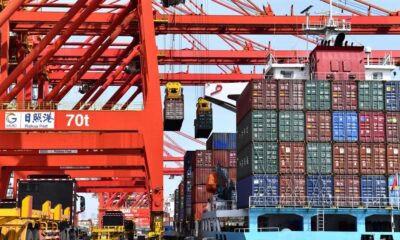
 Asia2 weeks ago
Asia2 weeks agoOECD forecasts slower Chinese economic growth due to trade war
-
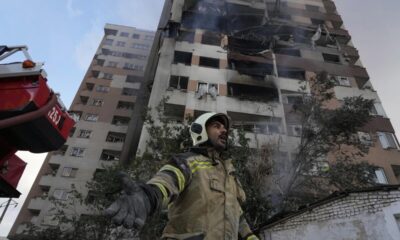
 Diplomacy5 days ago
Diplomacy5 days agoFormer diplomat warns forcing Iran out of the NPT is the greatest danger
-

 Asia2 weeks ago
Asia2 weeks agoLee Jae-myung inaugurated as South Korea’s new president, vows unity and economic revival
-

 Asia1 week ago
Asia1 week agoJapan, US showcase B-52 bombers in nuclear deterrence dialogue
-

 Middle East7 days ago
Middle East7 days agoNetanyahu’s government survives no-confidence vote as Haredi crisis is delayed
-
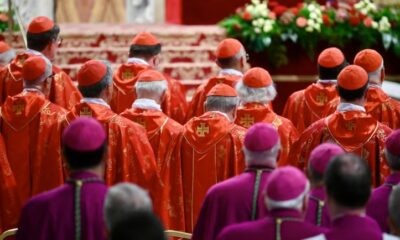
 Europe2 weeks ago
Europe2 weeks agoVatican under Pope Leo XIV warns against AI ‘playing God,’ urges ethical development
-

 Europe2 weeks ago
Europe2 weeks agoMerz government plans €46 billion corporate tax cut for Germany


